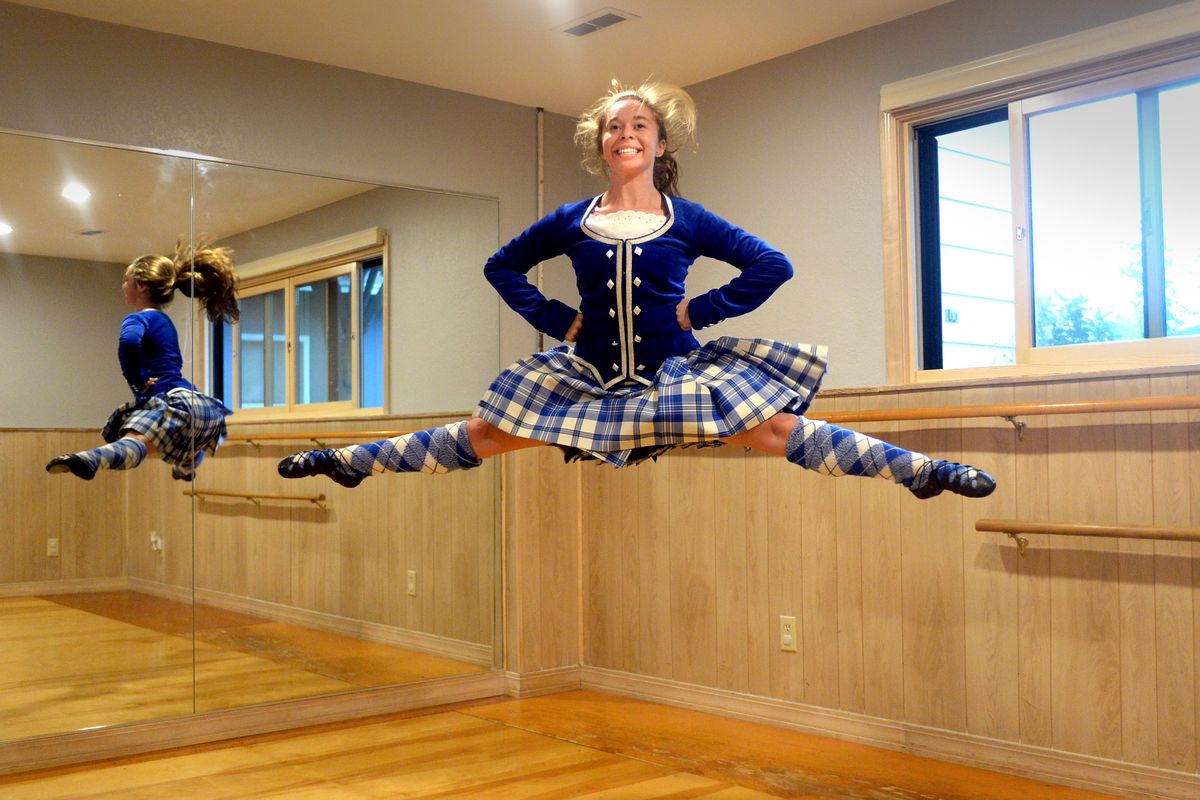Ferris teen leaps into prominence in Scottish dancing

When Meghan Palmer, 16, and junior at Ferris High School, began Scottish Highland dancing 12 years ago it wasn’t because she has Scottish ancestors or because she particularly liked dance.
“I did it because I wanted to do something my cousin was doing,” Palmer said, laughing. “It’s really not that great of a story.”
But what followed is: Palmer was the overall champion for her age group at the U.S. Scottish Highland Dancing Inter-Regional Championships this year – that’s the third time in a row out of five wins all together. And she just returned from Scotland where she placed third in the junior category of the World Highland Dancing Championships.
“Going to Scotland was amazing,” Palmer said, during a break in a practice session at her teacher Elizabeth Coyle’s dance studio in Spokane Valley. “We were there for three weeks, and there were girls from all over the world.”
At the world championship, all dancers do the same dance, the same steps, and then they are judged on many criteria including minute details, accuracy and of course, keeping time, Palmer said.
“There was a qualifier on Friday and then Saturday we had to dance again,” Palmer said.
Scottish Highland dancing includes a traditional dance performed while stepping and jumping back and forth over two swords laid across on the floor. That was one of the dances Palmer performed in Scotland, “and I didn’t kick the swords” she said smiling.
Irish dance experienced a revival when dance shows like “Riverdance” and “Lord of the Dance” – featuring pop music, flashing lights and steal toed dancing shoes – became hugely popular in the late 1990s. Scottish Highland and Irish dancing may look the same to the novice, but the two dance forms are different, Palmer said.
“The biggest difference between Irish dancing and Highland dancing is that it’s very technical and you have to be turned out all the time,” Palmer said, adding that Highland dancers dance on their toes and the ball of the foot. “Your heels are pretty much never touching the ground.”
The pace is quick and the woolen kilt is hot and heavy, and dances go on for several minutes at a time, changing in tempo, testing the dancer’s stamina.
Conditioning is not a concern for Palmer because she plays both soccer and tennis.
“Sometimes when I’m done dancing I can’t feel my legs – it is pretty tough,” Palmer said.
And she enjoys everything about it, even the bagpipe music.
“You sort of get used to that,” Palmer said. “When I practice at home I dance to normal music.”
Dancers wear traditional Scottish kilts and knee-high socks for competitions – and every detail of the outfit has to be just right.
Palmer said she’s not sure she will continue dancing once she goes to college.
“It is hard to keep it up with all the practicing,” she said, adding that she often practices two hours a day.
She has already gotten her first Highland Dancing teaching certificate allowing her to teach students under another teacher, and when she turns 18 she plans to pursue the full certificate so she can teach on her own.
What’s her best advice to budding Scottish Highland dancers?
Practice, and stay with it even when it’s hard.
“It’s a great thing to get into,” Palmer said. “There is so much to learn, and it’s best if you can start when you are really young.”